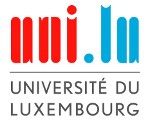Project Details of RATARCH
Project Description
Focus
Modern day organizations are in a constant state of change. Changing market situations, new products, novel technologies, etc., drive organizations to continuously innovate their services portfolio. These changes require a good steering instrument. Organizations increasingly use enterprise architecture to direct change processes. Enterprise architecture provides organisations with a means to direct and steer their transformation and innovation, while at the same time ensuring the alignment between different key aspects such as the business services offered, the business processed needed to deliver these services, as well as the IT needed in the execution of these processes.
In creating enterprise architectures, several design decisions have to be made. Such decisions are to a large extend based on assumptions about the situation at hand. Three major classes of such assumptions can be discerned:
- Environment: Assumptions on the state and evolution of the environment of the enterprise.
- Enterprise: Assumptions on the strategic direction of the enterprise as well as its performance. This includes the business and IT strategies.
- Implementation means: Qualities of the ``components'' (to be) used in the implementation of the enterprise (IT, Human Technology).
In practice, organizations are confronted with frequent changes and challenges to these assumptions. Furthermore, the assumptions and their relative priority also depend on the specific stakeholders that are involved in the architecture process and the transformation, which is to be governed by the architecture. This makes it all the more desirable for these organizations to clearly trace design decisions back to their underlying assumptions, as well as reason about the dependence of these decisions on these assumptions and the impact of possible changes of these assumptions.
In the ArchiMate project, in which Professors Proper and Van den Torre already collaborated, some initial work into the capturing of design decisions was conducted. In the context of software architectures, some relevant work has been conducted into the capturing of architectural knowledge in general. More recent work by Prof.\ Proper on Architecture Principles will also serve as a starting point to capture architectural design decisions.
Research challenges
The aim of the RationalArchitecture project is to explicitly link underlying assumptions to architectural design decisions in order to make the rationalization of these decisions explicit as well as traceable in terms of formal reasoning. We expect the resulting traceability between decisions and their assumptions, to enable a better underpinning of architectures, while at the same time enabling advanced impact analysis when confronted with changes to the underlying assumptions. The latter enables impact analysis such as: If an assumption is changed, what parts of the architecture are affected?, or Given the expected (in)stability of the assumptions taken, what parts of the architectures are least stable? Such reasoning based analysis generally goes beyond the ability of main stream enterprise architecture tools, which conduct impact analysis using some for of simulation, for specifically identified changes to the architecture.
Some specific research challenges that need to be met by this research project are:
- How to represent/capture the rationalization/motivation of architecture decisions? How to represent/capture the underlying assumptions, in such a way that they support formal reasoning.
- How to formally reason on the relation between assumptions and decisions. How to derive the impacted design decisions when assumptions need to be adopted. How to assess the robustness of design decisions in relation to the robustness of underlying assumptions?
- How to incorporate uncertainties (based on the uncertainties of the assumptions) into the reasoning? How to deal with changes in the uncertainties? Can we indicate potential problems in the current architecture based on changed uncertainties irt past architectural decisions?
- Architectural design decisions typically involved multiple stakeholders. This means that conflicting stakes and concerns, and the ensuing different priorities will have to be integrated. More specifically, some form of negotiation between the different stakes is called for.
Expected results
The project will result in a logic-based framework to capture the rationalization of architecture related design decisions, and to reason about the relationship between these decisions and their underlying assumptions. The framework will cater for uncertainties of the underlying assumptions, as well as negotiation between different stakeholders involved in the creation and implementation of architectures. The framework will be specialized further towards two classes of properties of enterprises and their IT: security and modifiability, while the relevance of the results will have been validated in terms of a number of real-world case studies.
Members
- Prof.dr. Erik Proper, Tudor and Radboud University Nijmegen
- Prof. Leon Van der Torre, University of Luxembourg
- Dr. Khaled Gaaloul, Tudor
- Diana Marosin, PhD Student, Tudor and Radboud University Nijmegen
- Marc van Zee, PhD student, University of Luxembourg

